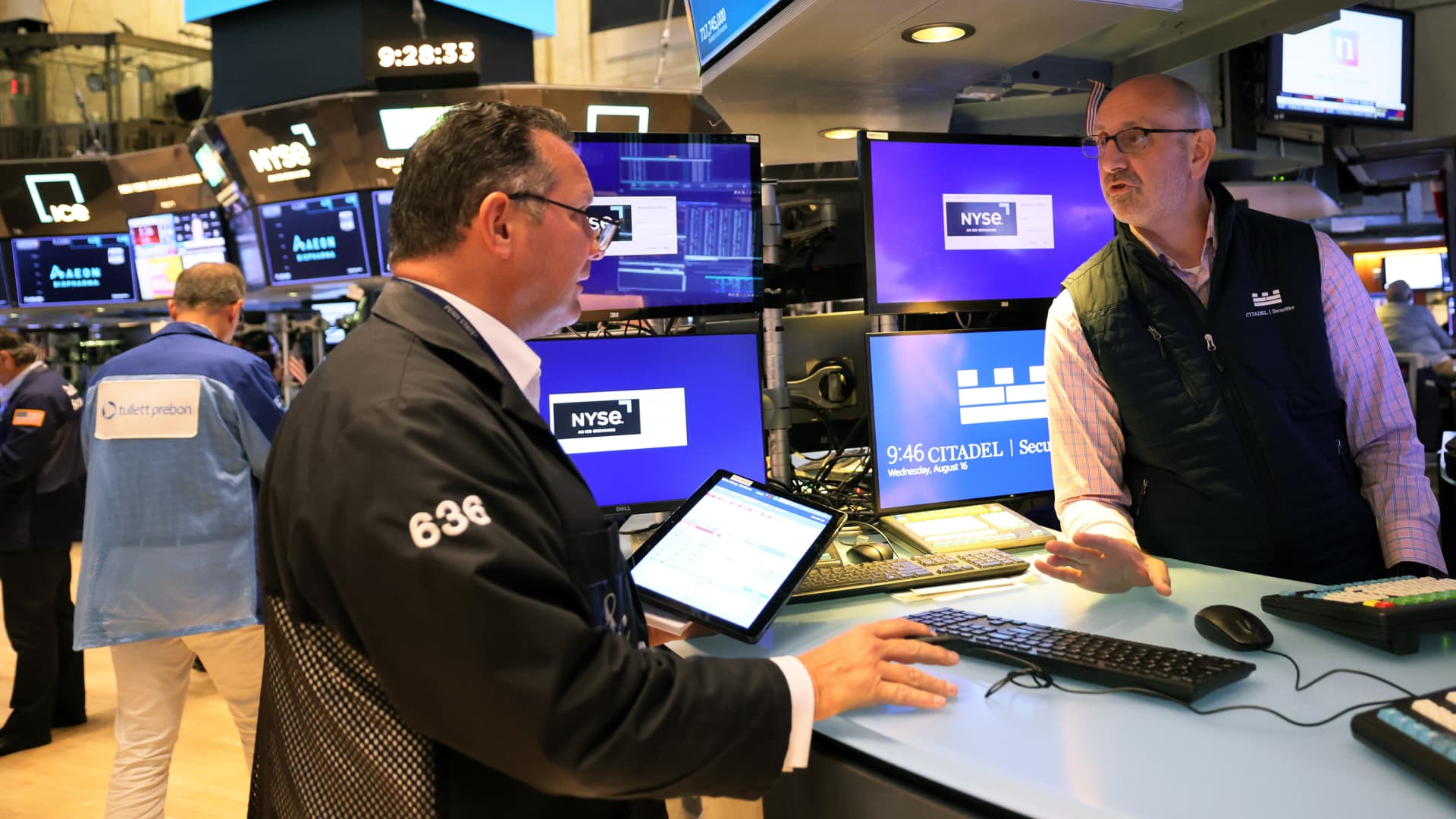Investors gauging monetary views by watching the level of the Federal Reserve’s key interest rate have their eye on the wrong ball. Judging by recent information coming out of the Fed, policymakers these days are far more concerned with real rates, or the difference between nominal rates and inflation indicators, than they are about the particular level where the benchmark fed funds rate is hovering. The relationship is causing some angst as markets try to figure out how high Fed officials are willing to take real rates, and how long they’ll leave them there. Minutes released Wednesday from the central bank’s July 25-26 meeting added to that worry as the summary showed officials are concerned that inflation pressures remain largely in place even if there are some signs of easing. “The market is taking the Fed’s hawkishness as a signal about their views on long run real interest rates, not just where nominal Fed Funds have to go this year and next,” Nicholas Colas, co-founder of DataTrek Research, wrote in his market note Wednesday evening. “Real long-term rates of 2–3 percent (the old 2006–2007 highs) could reduce consumption and investment by increasing the cost of consumer debt and corporate cost of capital,” he added. Depending on your definition, real rates are somewhere between mildly to moderately restrictive on growth, a place the Fed wants to be with inflation running well above its 2% annual target. Gauging the ‘real’ rate Chair Jerome Powell , following the July meeting, said his definition of real rates is the fed funds rate minus “near-term inflation expectations.” The central bank likes to use the University of Michigan consumer sentiment survey as a barometer for how the public feels about inflation. With the fed funds rate running at 5.33% and the Michigan survey indicating one-year inflation expectations at 3.3%, that puts the real rate around 2%. Speaking on the issue of the real rate, Powell classified the current level as “restrictive, more so [following the rate hike approved at the July 25-26 meeting], “meaning that it is putting downward pressure on economic activity and inflation.” “We are resolutely committed to returning inflation to our 2 percent goal over time. Inflation has proved repeatedly, has proved stronger than we and other … forecasters have expected, and at some point, that may change,” Powell said at the post-meeting news conference. “We have to be ready to follow the data, and given how far we’ve come, we can afford to be a little patient, as well as resolute, as we let this unfold.” Using the 10-year Treasury yield against the inflation rate, the real rate currently sits around 1.6% . That’s below the 2.06% recent peak in March but well above where it ran for virtually the entire period from the end of the 2008-09 financial crisis until the Fed started hiking in 2022. The evidence, though, that higher real rates are holding back activity is mixed. Inflation as measured by the consumer price index has fallen from above 9% in June 2022 to 3.2% now. However, economic activity remains brisk and unemployment low. That could force policymakers into a tighter posture that in turn could dampen this year’s stock market rally. After all, the S & P 500 has fallen more than 3% from where it was after the last Fed meeting, and the market saw a sell-off Wednesday following the release of the July meeting minutes that indicated more hikes could be on the way if inflation doesn’t keep moving lower. Markets sold off again on Thursday. In fact, the meeting summary also showed that the Fed’s Survey of Primary Dealers, a gauge of how bond market insiders feel about conditions, showed that “survey respondents expected real rates to increase through the first half of 2024 and to remain above their expectations for the long-run neutral levels for a few years.” Even if the Fed doesn’t hike anymore, it seems more inclined to keep real rates elevated until it sure inflation has been vanquished. Its focus on real rates could mean more hawkish policy, particularly if inflation expectations start rising again. “In short, stock and bond markets think they see some fissures in the famous ‘Fed Put’ — the idea that the [Federal Open Market Committee] will always provide a safety net for the US economy and therefore financial asset prices,” Colas wrote. “Last year, we saw that belief challenged by the Fed’s moves at the short end of the curve. This year, we are getting the same message at the long end.”
The Fed’s focus on ‘real’ rates is what investors should be watching

Denial of responsibility! Chronicles Live is an automatic aggregator of the all world’s media. In each content, the hyperlink to the primary source is specified. All trademarks belong to their rightful owners, all materials to their authors. If you are the owner of the content and do not want us to publish your materials, please contact us by email – chronicleslive.com. The content will be deleted within 24 hours.
